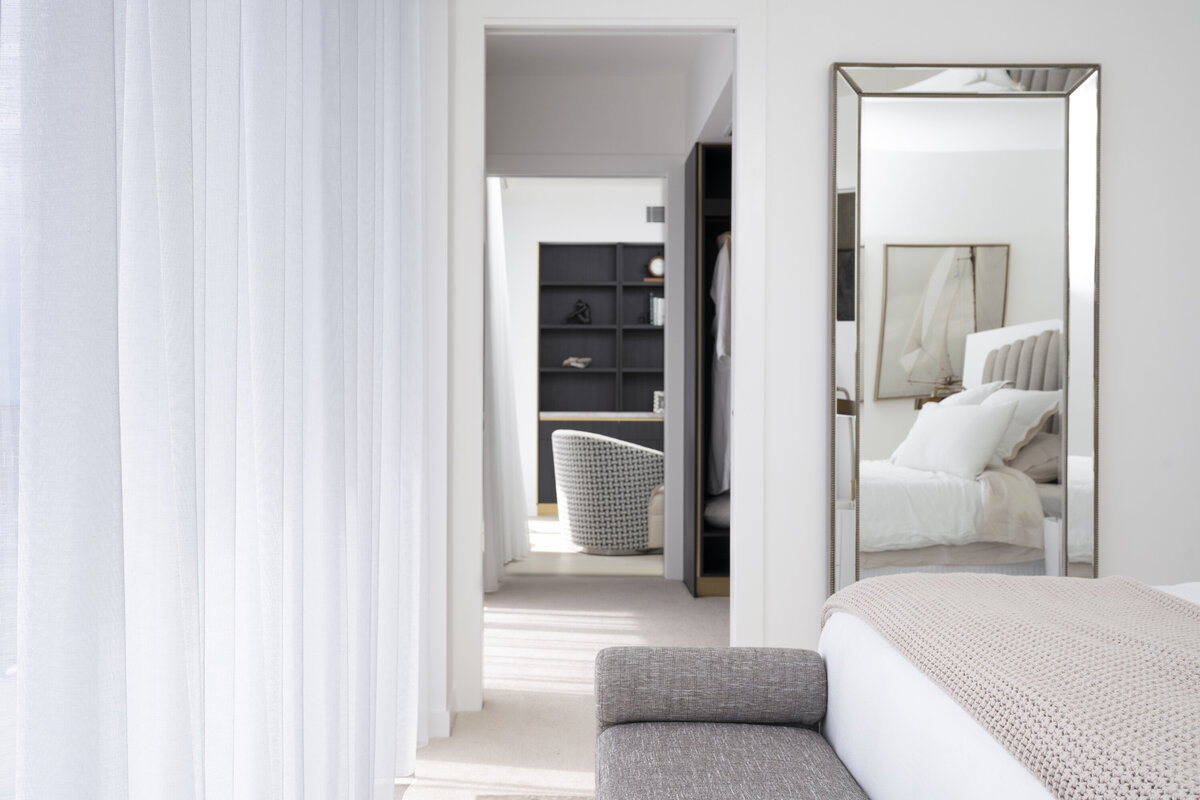Should Curtains Touch the Floor?
June 4, 2025
When it comes to choosing the right curtains, one of the most common questions homeowners ask is: should curtains touch the floor? According to many interior designers, the answer is a resounding yes—curtains should at least kiss the floor to create a polished and intentional finish. In this guide, we explore why floor-length curtains are preferred, how to measure curtain length properly, and what effect different styles can have on your space.
Floor-Length Curtains
Curtains aren’t just functional—they shape the overall look and feel of your interiors. When curtains fall short of the floor, they can make even the most beautiful window treatments look incomplete or poorly planned. On the other hand, curtains that graze the floor or puddle on the floor add a sense of sophistication, elongate the walls, and bring a sense of cohesion to the room’s design.
The Ideal Length: Touching or Grazing the Floor
Curtains Should Kiss the Floor
Designers generally agree that curtains should at minimum kiss the floor—meaning the fabric just touches the surface without pooling. This style offers a clean, tailored look suitable for living rooms, dining rooms, and bedrooms alike.
Puddled Curtains for Elegance
For a more dramatic or romantic style, some homeowners choose puddled curtains, where the fabric puddles on the floor. This style is often seen in traditional or formal spaces and is great for creating a luxurious, vintage aesthetic.
Grazing the Floor
Floor length curtains that lightly graze the surface strike a balance between elegance and practicality. They’re ideal for open and close daily use and create a visually pleasing line from the curtain rod down to the floor.
The Problem with Shorter Curtains
While there are exceptions, such as in kitchens or bathrooms, shorter curtains are often seen as less desirable in living spaces. A short curtain—particularly one that ends several inches above the floor—can break up the flow of the room and make the window frame appear oddly proportioned.
Curtains that are too short can also negatively affect the overall look and feel of the space, giving it a rushed or unfinished vibe. To avoid this, always ensure that the length of curtain is carefully considered before installation.
How to Measure for Curtain Length
To ensure that the curtains are the right length, here’s how to measure for curtain installation properly:
1. Decide Curtain Placement
Will the curtain rod sit just above the window frame, or closer to the ceiling? Hanging your curtains close to the ceiling (about 10-15cm above the frame) will make the room feel taller and more spacious.
2. Choose the Style
Are you aiming for floor length curtains, puddled curtains, or something that just kisses the floor? Your choice will influence how much fabric you need and how far below the rod your curtain should drop.
3. Take Accurate Measurements
Measure from the top of the curtain rod to the point on the floor where you want the curtain to end. Remember to allow for any hardware like rings or clips that might add length.
Curtain Styles and Room Types
Different spaces call for different curtain styles, but the principle remains the same—curtains should touch the floor wherever possible.
Living Rooms
In living rooms, floor length curtains help create a sense of height and elegance, making the room feel more expansive.
Dining Rooms
For the dining room, puddled curtains can add a formal and dramatic flair, perfect for entertaining guests and dressing up the space.
Bedrooms
While some may opt for curtains that are easy to open and close, full-length styles still reign supreme for creating a cosy and elegant retreat.
Tips for Hanging Curtains Like a Designer
- Always hang curtains wider than your windows to create the illusion of a larger window and let in more natural light.
- If you want to make a small room look bigger, hang curtains higher and let them touch the floor to draw the eye upward.
- For a more modern look, choose fabrics that flow easily without too much stiffness.
- Don’t forget functionality—curtains should be easy to operate while still achieving the desired visual effect.
Final Thoughts: It’s All About Intentional Styling
Ultimately, the length of your curtains speaks volumes about the attention to detail in your space. While shorter curtains can work in utility spaces, in areas where aesthetics matter—like living rooms, dining rooms, and bedrooms—curtains should touch the floor. Whether you prefer a clean kiss the floor style or more luxurious puddled curtains, the goal is to achieve a finished, purposeful look.
At Rivage Curtains and Blinds, we help homeowners achieve their ideal look with custom-designed window treatments that match their space, taste, and lifestyle. From expert advice to other professional curtain services, we’ll ensure your curtains are the perfect length—every time.

Rivage Curtains & Blinds. © 2024.
Privacy Policy | Sitemap | Terms and Conditions | Brand & Website by Olive St Studio.